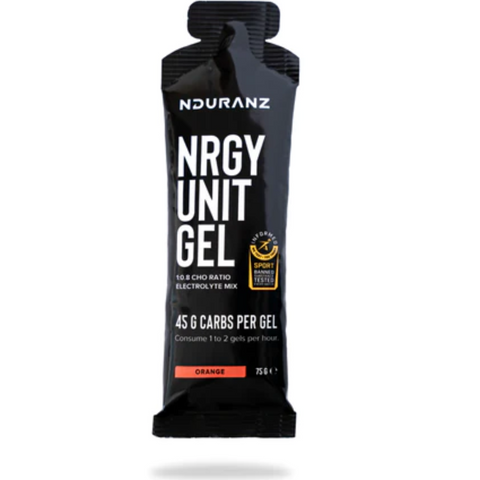Energy gels hit the mass market for the first time in 1988 at Ironman Hawaii. The manufacturer, who had previously tried to enter the South Africa and England markets, hit a short period of sales.
After a short break, energy gels made a grand return in the 90s of the previous millennium after many people were intrigued by the stuff in the packets. If famous athletes with their great results squeeze energy gels, this stuff must work!
One of the great triathletes and the first triathlon star, Dave Scott, promoted Bud Light beer and energy gels. During the race, he used gels, and afterwards he drank beer for recovery.
Times have changed, and alcohol is no longer a part of top-level sports, but energy gels remain. In fact, their use is increasing. Now we have a million different manufacturers offering different ingredients and making impossible claims.
By looking for the magic ingredient to justify the price tag and convince customers their energy gel is what they truly need, many manufacturers "jump the shark", to borrow a phrase from pop culture.
Many manufacturers seem to believe that providing energy without digestive issues is not enough. They keep searching for the magic ingredient and make unprecedented promises.



4Energy Gel Box
Refreshing taste with fruit juice



Nrgy Gel 45 Box
45 g CHO per gel with electrolytes



Nrgy Gel 45 with Caffeine Box
45 g CHO, 65 or 130 mg caffeine per gel



Nrgy Gel 22.5 Box
22.5 g CHO per gel
The ingredients of a good energy gel?
A good source of carbohydrates! Preferably, one that doesn't cause digestive issues.
For high carbohydrate intakes, a combination of glucose and fructose works best. This is because your body uses different carbohydrate transporters for these two simple sugars, allowing for high absorption rates.
Keep in mind that maltodextrin is often used instead of glucose.
Why maltodextrin?
Maltodextrin is composed of glucose molecules, which despite their complex composition have a very high glycemic index. This means they are easily absorbed, which allows your body to use them efficiently as an external source of energy instead of depleting its glycogen stores.
Maltodextrin is less sweat than glucose, oxidizes more quickly during exercise, and its main benefit is that even when consumed in high quantities, it doesn't cause digestive issues.
What ingredients should be avoided?
Adaptogens
Adaptogens are great — their effect adapts to your body functions with several great benefits, but they still shouldn't be included in the energy gels. Why? Because they need to be loaded in the system for a prolonged period of time!
This is why they have no effect if you consume them during training or race. It is also pointless to intake adaptogens with energy gels because adaptogens work better if taken alone.
Maybe we can give some support to rhodiola rosea, which in theory could increase your energy levels immediately after consumption. But we are not convinced this is better than the well-tested caffeine.
Protein and fat
Both protein and fat need a lot of energy to be digested, reduce absorption of fast carbohydrates, and disturb the stomach. Nothing you need during physical exercise.
There are endurance athletes who use MCT fat as energy source, but this is something we can't recommend to an average athlete.
Artificial sweeteners
Nothing wrong with consuming foods that contain artificial sweeteners from time to time, but this becomes problematic if too frequent or long term.
Artificial sweeteners can damage the intestinal flora, which may cause unwanted intestinal problems when you least need them: during physical activity or period of stress.
Dates
Dates are the main ingredient of Middle Eastern cuisine, often used to interrupt the religious fasting as a source of fast energy.
Dates are easy to digest for most people, that's why some athletes use them instead of energy gels. There are also energy gel that use dates as an ingredient. The problem is that whole dates are difficult to chew and digest when running or cycling.
If used in energy gels, dates also provide too much vitamin B, which boost metabolism — this might cause digestive issues.
Furthermore, dates are rich in fiber, another metabolism booster, which increases the chance you'll be looking for a bush instead of winning the race. Their glycemic index is also relatively low, which isn't ideal as a source of energy during races.
Molasses
It's becoming a trend among manufacturers of "natural" energy gels.
The problem is that molasses is very bitter-sweet, is difficult to swallow, and often causes digestive issues.
Chia seeds
Another popular ingredient that makes no sense in energy gels.
In theory, chia seeds should help you regulate energy, but in practice the fiber within the seeds affects digestion, especially in combination with the naturally-present amino acids.
Glucose-fructose syrup
And we reached the most common culprit in energy gels.
Glucose-fructose syrup can increase the desire to consume additional calories, causes digestive issues, affects the fatty liver, increases risk of diabetes type 2, and causes inflammation.
Consuming an energy gel with glucose-fructose syrup here and there is not the end of the world, but don't make a habit out of it.
What energy gels do we recommend?
4Energy Gels have isotonic properties, as 66 ml of gel contains about 22 g of carbohydrates (88 kcal). In addition to maltodextrin, they contain fructose, easily absorbed through the fructose receptor, which provides high levels of easily-digestible energy.
Furthermore, these gels do not contain artificial sweeteners, colorants, or flavor enhancers, as fructose boosts the natural flavor of the fresh juice contained in the gel. The amount of thickeners is negligible, which makes this gel liquid and easy to consume — no water needed.
 4Energy Gels are easily digestible and have a great flavor without artificial sweeteners, colorants, or flavor enhancers.
4Energy Gels are easily digestible and have a great flavor without artificial sweeteners, colorants, or flavor enhancers.When you need more energy, there's Nrgy Unit Gel, which provides 45 grams of carbohydrates in the combination of maltodextrin and fructose in a 1:0.8 ratio, making use of your body's full absorption potential.
Nrgy Unit Gel contains electrolytes in the ratio you lose with sweat: salt, potassium, magnesium, and calcium, all in the highly-absorbable citrate form. One gel is enough to replace the minerals you lose in 400 ml of sweat. And just to make it clear, Nrgy Unit Gel contains no artificial aromas.
This also answers the question: energy gel or isotonic sports drink? As it provides the same amount of energy as Nrgy Unit Drink, the choice is yours.
Conclusion
Many manufacturers of energy gels promise amazing benefits due to almost magic ingredients, but they are most often of poor quality.
Instead, a good energy gel must respect the composition of carbohydrates and the concentration of electrolytes, both essential for absorption and hydration.
Two energy gels that respect these two points are 4Energy Gel and Nrgy Unit Gel — two gels we can recommend to any athlete.



4Energy Gel Box
Refreshing taste with fruit juice



Nrgy Gel 45 Box
45 g CHO per gel with electrolytes



Nrgy Gel 45 with Caffeine Box
45 g CHO, 65 or 130 mg caffeine per gel



Nrgy Gel 22.5 Box
22.5 g CHO per gel







